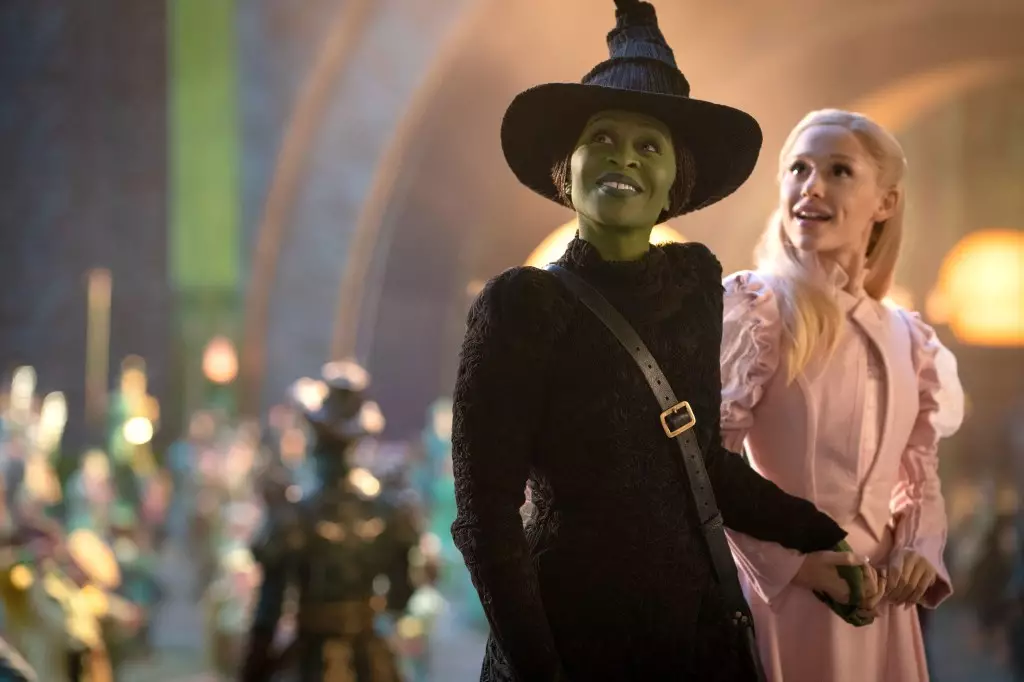The cinematic landscape is in a state of flux. While the advent of streaming services has reshaped how audiences consume movies, the theatrical experience remains a juggernaut that cannot be simply dismissed. Peter Levinsohn, NBCUniversal’s Chairman of Global Distribution, recently highlighted a staggering $100 million in revenue from “Wicked” through Premium Video on Demand (PVOD). This figure is not just an impressive sum; it serves as a clarion call for the value of theatrical releases. Levinsohn’s assertion that “theatrical is the foundation” signals an unyielding commitment to the silver screen. The profits generated are not merely numbers on a balance sheet; they represent a lifeline that allows studios to invest in more films, contributing to a vibrant ecosystem that benefits both audiences and filmmakers alike.
The push for theatrical windows emerges against a backdrop of enticing alternatives. The digital age has saturated the market with options, yet Levinsohn strongly insists on the primacy of theaters in creating brand value. This sentiment resonates particularly in an industry that has seen the market share of smaller to mid-range films squeezed by the overwhelming barrage of blockbusters. To navigate this conundrum, studios like NBCU have recalibrated their approach, shortening the time films spend in exclusive theatrical release before shifting to on-demand offerings.
The Consumer Disconnect: A False Sense of Abundance
However, not everyone in the room concurs. Regal Cineworld’s CEO, Eduardo Acuna, raises an eyebrow at this optimism. He argues that the average consumer is often blissfully unaware of the nuances that differentiate transactional, subscription, and streaming services. Instead, there is a pervasive mindset that good movies will eventually arrive “for free” at home. This notion creates an unhealthy expectation that ultimately degrades box office revenues. Acuna’s perspective underscores a significant challenge facing the exhibition sector: consumer habits forged in the glare of convenience may doom cinemas if studios fail to recognize this shifting tide.
Despite Levinsohn’s claims of resilience in the box office trends—even suggesting minimal differences in “decay curves” for films released earlier on PVOD versus later—it is essential to consider the qualitative implications of this analysis. Are we merely observing numbers, or have we overlooked the cultural ramifications of habitual consumption patterns? The psychological impact of readily available content cannot be ignored, as it might cultivate a generation less willing to seek out theatrical experiences, believing they can wait it out.
The Importance of Exclusive Theatrical Windows
Industry veteran Tom Quinn, whose film “Anora” recently took home an Oscar, supports the importance of exclusive theatrical windows. His observation that a 70-day exclusive run likely contributed to its critical acclaim and box office success serves as a stark reminder of what is at stake. It is a sobering but essential truth: the caliber of a film can be compromised when distribution strategies prioritize expediency over quality engagement with audiences. Shortening theatrical windows might not only jeopardize box office returns but could also dilute the cultural impact of more intimate narratives.
Yet even amidst the debate, there remains an undeniable yearning for the communal aspect of watching a film on the big screen—an experience that transcends mere entertainment. Director Joseph Kosinski aptly echoes this sentiment, recalling the formative memories he forged during childhood viewings of cinematic classics like “Raiders of the Lost Ark.” It is that shared experience—the gasps, laughs, and collective sighs—that makes cinema a vital component of our societal fabric. Movies like “Top Gun: Maverick” demonstrate that the anticipation built around a theatrical release can create an electric atmosphere that home viewing simply cannot replicate.
Adapting for a Thriving Future
As these industry voices converge at CinemaCon, the mission is clear: reinvigorating interest in theatrical experiences while tactfully embracing emerging distribution platforms. Levinsohn’s commitment toward nurturing the theatrical foundation is laudable, but it requires a symbiotic relationship with evolving consumer behavior. If exhibitors are to survive and thrive, they must adapt to an audience that increasingly demands flexibility without sacrificing the value and excitement of a dedicated theater experience.
And therein lies the crux of the ongoing discussion. The balance between traditional theatrical runs and the so-called conveniences of home viewing presents a delicate challenge for studios and exhibitors alike. Only by fostering this collaborative dialogue and listening to the pulse of audience expectations can the industry hope to chart a course towards a more resilient future. The road may be fraught with challenges, but Levinsohn’s $100 million testament serves as a clear reminder: the theatrical experience remains indispensable.

